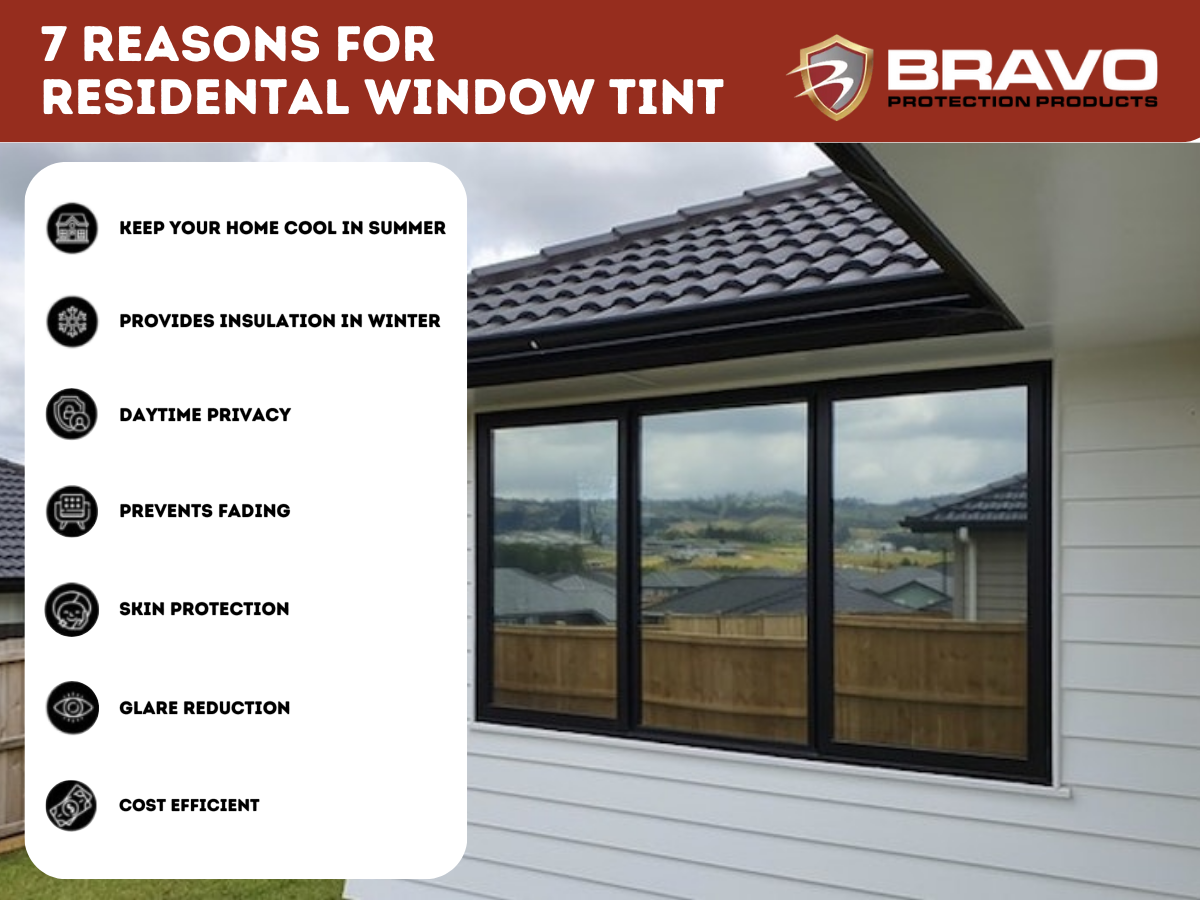Residential Window Tint: Increase Safety and Include a Layer of Defense
Residential Window Tint: Increase Safety and Include a Layer of Defense
Blog Article
How Residential Home Window Tinting Enhances Your Home's Power Performance
Residential home window tinting offers a compelling option for homeowners seeking to boost energy efficiency within their living rooms. By using specialized films to home windows, it properly reduces warm transfer, thereby supporting indoor temperature levels and lessening the requirement for too much heating or cooling.
Understanding Home Window Tinting
Understanding home window tinting is essential for property owners seeking to improve both convenience and energy effectiveness in their living rooms. Residential Window Tint. Window tinting involves the application of a thin film to the interior or outside surface of glass home windows. This movie can considerably regulate the amount of sunlight and heat that gets in a home, hence affecting interior environment conditions
There are numerous types of window tinting films readily available, each with distinct residential or commercial properties. The performance of home window tinting is often gauged by its Visible Light Transmission (VLT) percent, which suggests just how much light can pass through the movie.
Benefits of Energy Efficiency
Home window tinting not just enhances looks yet additionally plays a considerable duty in boosting energy efficiency within household rooms. By lowering warm transfer through windows, tinted films develop a more stable interior environment, which can bring about substantial reductions in power consumption for cooling and heating. This energy effectiveness converts right into reduced energy costs, giving homeowners with significant long-lasting financial savings.

Additionally, window tinting boosts the comfort of living rooms. By lessening glow and blocking dangerous UV rays, colored home windows create an even more pleasant atmosphere, which can result in boosted well-being for residents. The protection against UV rays likewise aids preserve furnishings and floor covering from fading, adding to the durability of family items.
Exactly How Tinting Functions
Tinting films run with a combination of innovative materials and modern technologies designed to manage the quantity of solar power going into a home. Primarily composed of polyester, these movies typically include metallic or ceramic fragments that absorb and show heat. This twin capacity enables them to substantially reduce the penetration of ultraviolet (UV) rays and infrared radiation while permitting visible light to travel through.
The effectiveness of window tinting is gauged by its solar warmth gain coefficient (SHGC), which shows exactly how much solar power is transmitted via the window. Reduced SHGC values are more effective as they denote better warm rejection. Furthermore, home window colors can include a selection of shades, allowing home owners to personalize their aesthetic choices while boosting energy performance.
Additionally, these movies function as a barrier, protecting against warm loss throughout colder months by mirroring interior heat back right into the living space. This thermal insulation effect matches the cooling advantages over here gotten during warmer months, adding to a well balanced interior environment year-round. By managing solar power successfully, property home window tinting not only improves convenience however also plays a crucial function in reducing power usage and lowering utility bills.
Selecting the Right Color

There are various types of home window movies offered, consisting of colored, metalized, and ceramic. Ceramic movies provide outstanding warm control without endangering presence and are highly resilient, making them a preferred selection.
Noticeable light transmission (VLT) is one more vital variable, as it indicates the amount of all-natural light that can go through the tinted glass. Property owners need to choose a tint with a VLT that enhances their lights choices while still giving ample glare reduction.
In addition, analyzing the solar heat gain coefficient (SHGC) can aid establish just how well a color can obstruct heat from sunlight. A lower SHGC shows far better warm control, ultimately boosting power effectiveness.
Setup and Upkeep Tips
Correct installment and maintenance are vital elements in maximizing the benefits of household home window tinting. Professionals additionally make use of specialized tools and strategies, which can boost the additional reading resilience and performance of the color.
Following setup, maintenance is crucial to lengthen the life of the window film. It is recommended to wait at the very least 30 days before cleaning up the tinted windows to permit the adhesive to cure totally.
Attending to these problems quickly can prevent additional damages and preserve power performance. By sticking to these setup and maintenance pointers, homeowners can guarantee their home window tinting continues to offer substantial energy financial savings and comfort for years to come.
Conclusion
To conclude, residential window tinting works as a reliable service for boosting energy effectiveness within homes. By lowering warm transfer and blocking hazardous UV rays, window films add to reduce energy consumption and enhanced indoor convenience. The choice of suitable tinting materials, along with proper installment and upkeep, further makes best use of these benefits. Ultimately, window tinting stands for a sustainable investment that not only decreases energy costs yet also promotes a comfy living setting throughout the year.
Home window tinting entails the application of a thin film to the inside or exterior surface area of glass windows. By minimizing warmth transfer with windows, tinted films produce an extra stable indoor climate, which can lead to substantial reductions in energy usage for home heating and air conditioning.The effectiveness of window tinting is measured by its solar warm gain coefficient (SHGC), which shows just how much solar energy is transmitted with the home window. By managing solar energy successfully, household window tinting not only boosts comfort however likewise plays an essential duty in minimizing energy intake and lowering utility expenses.
By minimizing warmth transfer and obstructing dangerous UV rays, window films add to get redirected here lower power intake and boosted indoor convenience.
Report this page